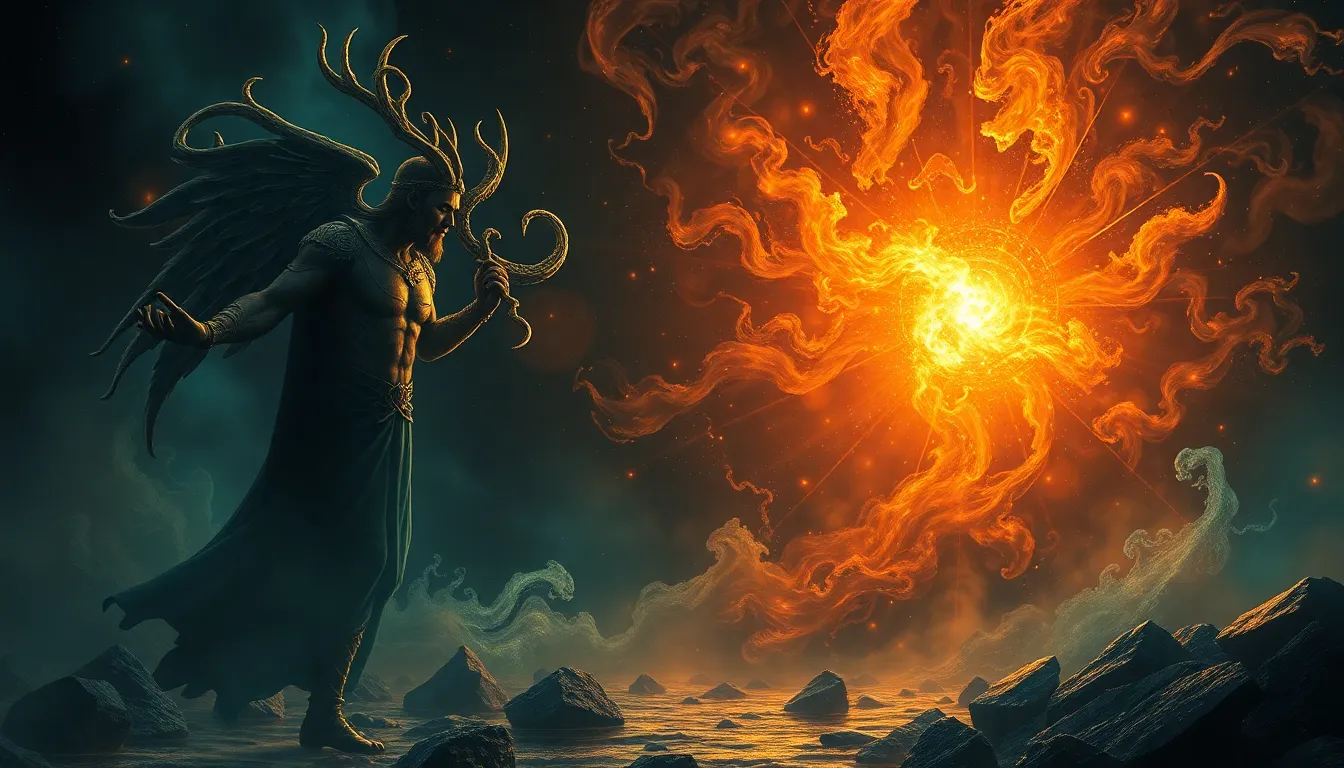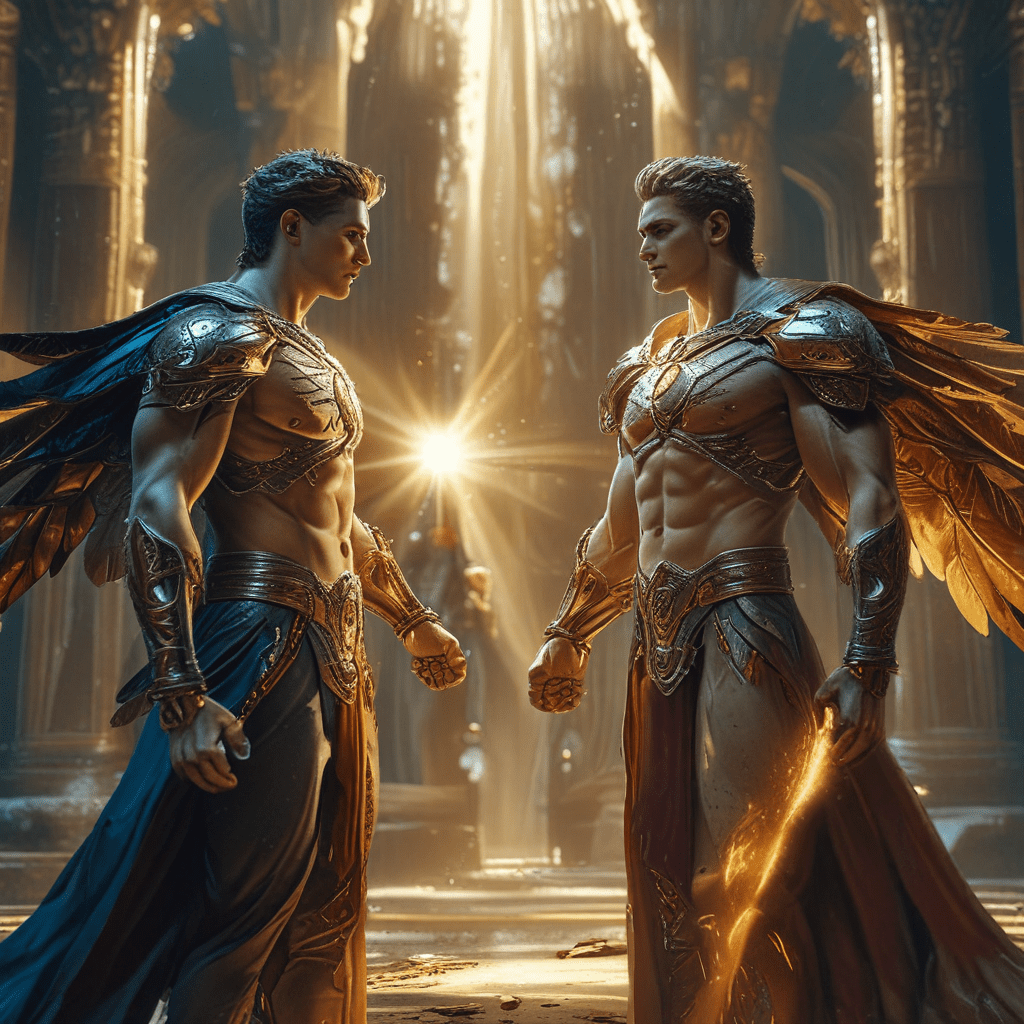Sleipnir Tales: The Celtic Myths of Fae and Druids
I. Introduction to Celtic Myths
Celtic mythology encompasses the rich tapestry of legends, beliefs, and stories that originated from the Celtic peoples of Western Europe, particularly in regions such as Ireland, Scotland, Wales, and Brittany. These myths are not just mere tales but are woven into the very fabric of Celtic identity, reflecting their values, fears, and aspirations.
Within this mythology, the fae and druids hold significant roles, representing the mystical and the wise, respectively. The fae, often seen as magical beings, embody nature’s enchantment, while druids are the custodians of ancient knowledge and spiritual practices. This article will explore the intriguing connection between these two entities and how they are encapsulated in the legendary tales of Sleipnir.
Sleipnir, a mythical horse in Norse mythology, represents swift travel between worlds. Though it originates from Norse tales, the intermingling of Celtic and Norse myths shows the cultural exchanges that shaped ancient beliefs. Understanding Sleipnir’s significance allows us to appreciate the broader context of Celtic mythology.
II. The Fae: Guardians of the Otherworld
The fae, often referred to as fairies or faeries, are supernatural beings found in Celtic mythology. They are characterized by their ethereal beauty, agility, and connection to nature. The fae are usually depicted as diminutive, with delicate wings, and they possess magical abilities that can be both benevolent and mischievous.
In Celtic culture, the fae serve various roles:
- Guardians of nature and the land.
- Intermediaries between the human world and the Otherworld.
- Influencers of fate and fortune, capable of bestowing blessings or curses.
Notable figures among the fae include:
- Oisín: A hero who ventured into the Otherworld.
- Brigid: A goddess associated with poetry, healing, and fertility.
- The Tuatha Dé Danann: A race of divine beings often considered the ancestors of the fae.
The stories surrounding these figures often highlight their interactions with humans, revealing the delicate balance between admiration and fear that the Celts held for the fae.
III. The Druids: Keepers of Ancient Wisdom
Druids were the priestly class of ancient Celtic societies, known for their deep connection to nature, spirituality, and the cosmos. They were not only spiritual leaders but also teachers, healers, and advisors to kings. Their extensive knowledge encompassed a wide array of subjects, including astronomy, herbal medicine, and law.
In Celtic society, druids held several key roles:
- Spiritual guides who conducted rituals and sacrifices.
- Educators who passed on wisdom through oral traditions.
- Judicial figures who interpreted laws and settled disputes.
Myths and legends surrounding famous druids, such as Merlin and Taliesin, often depict them as wise sages with the ability to manipulate the elements and foresee the future. Their stories reflect the reverence with which the Celts viewed knowledge and wisdom.
IV. The Interconnection Between Fae and Druids
The relationship between druids and fae is a fascinating aspect of Celtic mythology. Both entities inhabit a world where the boundaries between the physical and the magical are blurred. They share a commonality in their deep connection to nature, making them allies in many tales.
In various stories, druids are portrayed as protectors of the fae, guiding humans on how to coexist with these magical beings. The fae, in turn, are often depicted as guardians of the druids’ knowledge, ensuring that only the worthy can access their wisdom.
The symbolism of their connection reflects:
- The balance of nature and the importance of preserving it.
- The harmony between the seen and unseen worlds.
- The significance of knowledge and magic in understanding one’s place in the universe.
V. Key Myths Featuring Fae and Druids
Numerous myths intertwine the lives of fae and druids, showcasing their shared adventures and conflicts. One notable tale is “The Tale of Aengus and the Fae,” where Aengus, the god of love, embarks on a quest to find his beloved, a beautiful fae maiden named Caer. This story illustrates the themes of love, desire, and the challenges of bridging the gap between mortal and fae realms.
In “The Tale of Taliesin,” the legendary bard and druid transforms through his experiences with fae magic, signifying the transformative power of knowledge and connection to the Otherworld. These tales often impart moral lessons, such as:
- The importance of respecting nature and its inhabitants.
- The value of wisdom gained through experience.
- The consequences of disregarding the fae’s rules and customs.
VI. The Influence of Celtic Myths on Modern Fantasy
Celtic myths have profoundly influenced contemporary fantasy literature and media. From J.R.R. Tolkien’s “The Lord of the Rings” to the “Harry Potter” series, the elements of fae and druidic lore resonate throughout these works. Many authors draw inspiration from the rich tapestry of Celtic mythology, integrating its themes of magic, nature, and adventure.
Notable works inspired by Celtic lore include:
- “The Mabinogion”: A collection of Welsh tales rich in fae and druidic elements.
- “American Gods” by Neil Gaiman: Incorporates various mythological figures, including Celtic deities.
- “The Iron Druid Chronicles” by Kevin Hearne: Features a modern druid interacting with fae and other mythological beings.
This resurgence of interest in fae and druid narratives highlights their timeless appeal and relevance in today’s storytelling.
VII. Modern Interpretations and Adaptations
Modern retellings of Celtic myths continue to captivate audiences, offering fresh perspectives on ancient tales. Authors, filmmakers, and artists reinterpret the stories, infusing them with contemporary themes while respecting their origins.
Festivals and celebrations, such as Beltane and Samhain, play a crucial role in keeping these myths alive. They serve as occasions for communities to connect with their heritage, celebrating the cycles of nature and the influence of fae and druids.
Artistic expressions influenced by these ancient tales range from:
- Literature and poetry that explore the mystical.
- Visual arts that depict fae and druidic imagery.
- Performances that bring stories to life through theater and dance.
VIII. Conclusion: The Legacy of Sleipnir Tales
The enduring nature of Celtic mythology speaks to its significance in shaping cultural identities and understanding human experiences. The fae and druids, as integral figures within these myths, continue to inspire and educate generations about the importance of nature, knowledge, and the magical connections that bind us all.
As we reflect on the legacy of Sleipnir tales, it becomes clear that preserving these narratives is essential for future generations. They offer insights into the past while inviting us to explore the mysteries of our existence, ensuring that the magic of the fae and the wisdom of the druids remain alive in our collective consciousness.


